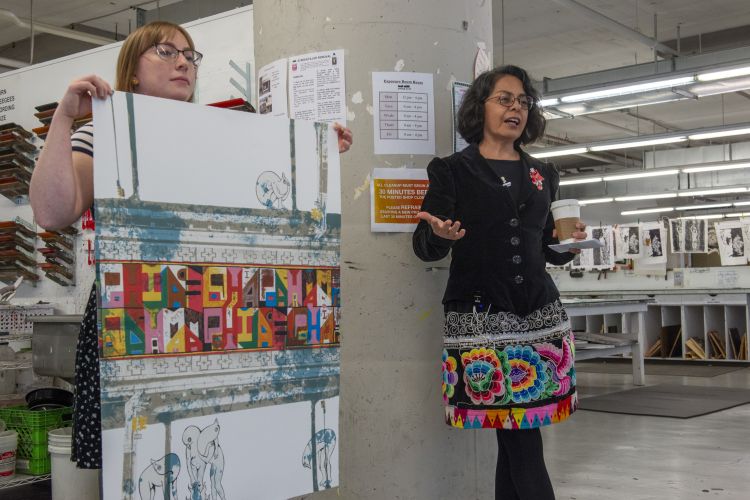STORIES FROM PAFA
Bo Bartlett
After more than 15 years of planning, hard work, and construction The Bo Bartlett Center opened at Columbus State University in January of 2018.
“It was pretty surreal. We worked on it right up until the day of the opening so it’s a little bit of an adjustment. After all of these years of work, it’s a little dreamlike. The opening was fascinating,” said artist Bo Bartlett (Certificate '80), of the facility that now bears his name.
Even though the sign at the front entrance says Bo Bartlett, he says the center is for the greater Columbus community.
“I don’t think of it as my center, I think of it as the city’s center and the South’s center and as America’s center,” Bartlett said. The center will display art from prominent American artists like Kate Javens, Steve Mumford, and Jeff Koons, but also focus on educational outreach and community support.
For the past five years Bartlett has been working with the local school and homeless community in Columbus, helping those populations develop their creativity and expression.
“I just believe in the power of art to transform lives. Not necessarily in a dogmatic way or religious way but I think creativity and openness and what goes into the process of making art is really the biggest hope we have right now,” he said.
“Home is where the art is” is a program that provides a safe and positive space for individuals in the homeless community to create art. Students in Muscogee County Schools participate in the “Art Makes You Smart” initiative; The Bo Bartlett Center provides art education for the affiliated schools.
Education opportunities will also be available for students who want to study on a more rigorous level. Bartlett also plans to open an atelier program through Columbus State University. He says it will be the first program of its kind in the South.
“It will be a rigorous training but unlike other atelier’s it won’t stop with the training in 1880,” he said. “Once you learn the basic skills, you will go on into contemporary time and culture.”
To foster a connection with the larger American art community, Bartlett aims to partner with schools and academies across the country, including PAFA. The center is already connected to PAFA, Bartlett is an alumnus of the certificate program and he modeled the center’s architecture after PAFA’s Furness building.
“It was modeled with skylights after PAFA but it’s more streamlined and modern. But the basic building design is there,” he said. “My original drawings on napkins and envelopes that were handed off to the architect all had this design.”
PAFA is not only seen in the center but also in Bartlett’s work today. He said coming to Philadelphia and PAFA in the late 1970s was life changing.
“People are true in Philly. People are real and that informed me, that’s how I learned a way of being that has integrity,” he said. “It’s not just PAFA, it’s Philadelphia itself. Traditionally the people that came out of PAFA were truly studying life at its core, and making art that reflects that.”
In addition to paintings that reflect life, Bartlett also began dabbling in film at PAFA. A medium he is still exploring today.
“I was at PAFA in my senior year when I started dreaming that my paintings were moving,” he said. “I started writing several screenplays and was eventually hired by the Wyeth’s to make Snow Hill (a documentary about the life of painter Andrew Wyeth) and then I’ve made other films since.”
His most recent film project, “Things Don’t Stay Fixed” will be released in 2019.
This spring Bartlett will be exhibiting at the Miles McEnery gallery in New York. He will be showing never before seen gouaches.
“I have so many of these because I do one a day. I don’t think there are any figures in any of these, they are all atmosphere and sea,” he said. “This is something I do every day and it’s much more tapping into the moment.”
Bartlett hopes the Bo Bartlett Center will allow more people in the South to explore themselves and the possibilities that art can bring.
“I believe in the creative process and encouraging people to tap into their creativity and let it evolve and not stifle, and let it feed their system.”
We're so excited you're planning to visit PAFA!
Make time for art — visit us Thursday to Sunday.
Before reserving your tickets, please review helpful information about museum hours, accessibility, building access, and special admission programs.
If you have any questions, feel free to reach out to us at visitorservices@pafa.org — we’d love to help!







